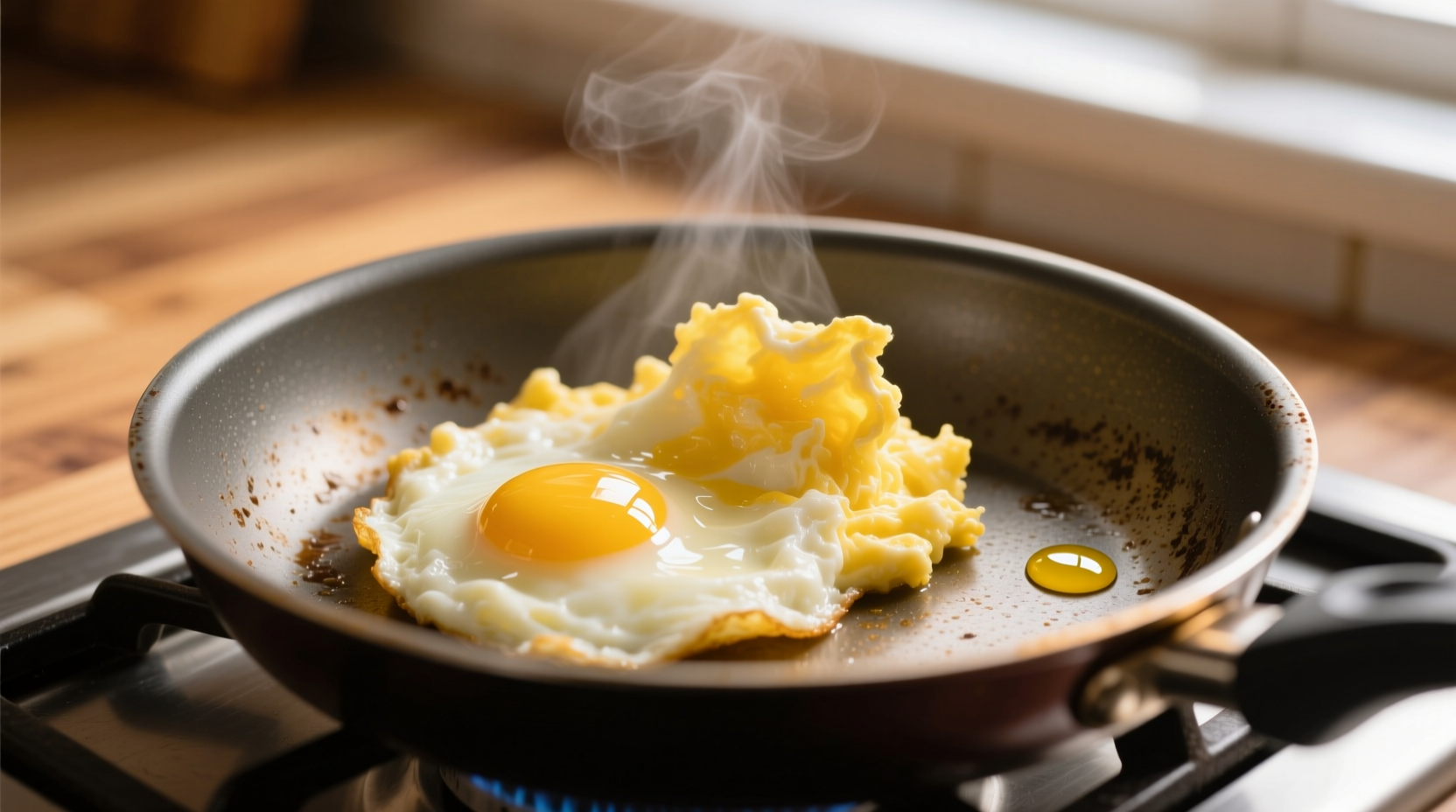Why Your Eggs Aren't Fluffy (And How to Fix It)
Many home cooks struggle with rubbery, flat eggs because they're using high heat and overcooking. The science behind fluffy eggs is simple: egg proteins unravel and bond when heated, but too much heat causes them to squeeze out moisture and tighten excessively. According to On Food and Cooking by Harold McGee, eggs begin to set at 144-150°F (62-65°C) and become firm around 158°F (70°C). Cooking above these temperatures rapidly leads to tough, dry eggs.

The Fluffy Egg Preparation Sequence
Follow this chef-tested sequence for consistently fluffy results. This isn't just about ingredients—it's about the precise order of operations that makes the difference between mediocre and magnificent eggs.
Step 1: Whisking Technique That Creates Air Pockets
Proper whisking incorporates air while evenly distributing yolks and whites. Use a fork or balloon whisk and follow these guidelines:
- Whisk for at least 30-45 seconds until completely uniform and slightly frothy
- Add 1-2 teaspoons of liquid per egg (water creates more steam, milk adds richness)
- Season with salt before cooking to help break down proteins for tenderness
Step 2: Temperature Control for Perfect Curds
Heat management is the most critical factor. Your pan should be preheated to medium-low (around 275-300°F / 135-150°C). Professional chefs at the Culinary Institute of America teach that eggs cook through residual heat, so remove them from the burner just before they reach your desired consistency.
| Heat Level | Visual Cue | Resulting Texture |
|---|---|---|
| Too High (350°F+) | Rapid bubbling, browning edges | Rubbery, dry, unevenly cooked |
| Ideal (275-300°F) | Gentle simmer, slow curd formation | Cloud-like, moist, uniform texture |
| Too Low (Below 250°F) | No movement, watery appearance | Undercooked, slimy texture |
Step 3: The Stirring Method That Makes All the Difference
Use a silicone spatula to gently push the cooked portions toward the center while tilting the pan to allow uncooked egg to flow underneath. This creates delicate, small curds rather than large, tough chunks. Stop cooking when eggs are slightly underdone—they'll continue to cook from residual heat.
Common Fluffy Egg Mistakes and Solutions
Even with the right technique, certain pitfalls can ruin your fluffy eggs. Here's how professional chefs troubleshoot the most frequent issues:
Problem: Watery Eggs
Cause: Over-whisking or adding too much liquid
Solution: Stick to 1-2 teaspoons of liquid per egg and avoid whisking beyond uniform consistency. If eggs release water during cooking, immediately remove from heat and stir vigorously to reabsorb moisture.
Problem: Rubbery Texture
Cause: High heat cooking or overcooking
Solution: Cook over medium-low heat and remove from burner when eggs are 80% done. According to America's Test Kitchen research, eggs continue cooking for 1-2 minutes after removal from heat.
Fluffy Egg Variations for Different Preferences
Once you've mastered the basic technique, these professional variations let you customize your fluffy eggs for different occasions and dietary needs:
Cheese-Enhanced Fluffy Eggs
Add 1 tablespoon of finely grated hard cheese (Parmesan, aged cheddar) during the last 30 seconds of cooking. The cheese melts into the eggs rather than clumping, creating pockets of rich flavor without compromising fluffiness.
Dairy-Free Fluffiness
For those avoiding dairy, replace milk with unsweetened plant-based milk or simply use water. The water creates steam that lifts the eggs, producing exceptional fluffiness without any dairy ingredients.
Pro Chef Secrets for Next-Level Fluffy Eggs
Professional kitchen techniques that transform good eggs into extraordinary ones:
- Room temperature eggs: Cold eggs from the refrigerator require more heat to cook evenly, often leading to overcooked exteriors and undercooked centers. Let eggs sit at room temperature for 15-20 minutes before cooking.
- Butter temperature matters: Add butter to the pan when it's foamy but not browned. Properly tempered butter creates a protective layer around egg proteins, preventing overcoagulation.
- Final seasoning: While salting before cooking improves texture, a final pinch of flaky sea salt just before serving enhances flavor without drawing out moisture.
Historical Context of Egg Preparation
Egg preparation techniques have evolved significantly over centuries. While ancient Romans cooked eggs in ashes, the French omelet technique developed in the 17th century established many principles still used today. According to food historian Peter Rose, the emphasis on gentle heat and constant movement emerged from French culinary traditions and remains the foundation for creating fluffy eggs. Modern food science has simply validated what professional chefs have known through experience for generations.











 浙公网安备
33010002000092号
浙公网安备
33010002000092号 浙B2-20120091-4
浙B2-20120091-4